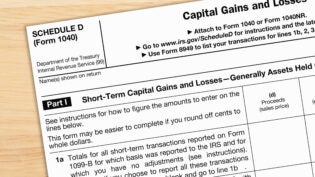5 Tax Saving Tips Most Small Businesses Don’t Follow
By: Ryan Kidman

Taxes are one of the biggest burdens facing small businesses. According to the Small Business Administration, many small businesses pay effective tax rates near 30%. Many financial experts argue that high taxes are killing small businesses.
“The truly wealthy people pay nothing in taxes compared to me,” said Michael Fredrich, the owner of MCM Composites. “The daily attacks on the so-called rich are actually attacks on private business owners, many of whom don’t make that much money. A lot of my income goes back to investing in new equipment, retiring debt, payroll, growing the business.”
The good news is that there are many ways small businesses can cut their tax bill in 2017. Here are some tax tips to follow.
Use Carryover Losses from Prior Years
Did you lose money in a prior tax year? You can may be able to use those losses to offset income this year. The IRS allows you to deduct up to $3,000 in carryover losses in any given year.
Try to Write Off Delinquent Debts
Did you make a business loan that never got paid back? You may be able to deduct it as a business loss. In order to deduct bad debts, you must show that it was made as a business loan. If it was made to an employee, business partner or creditor, you may be able to establish that you used it to build goodwill that you needed to run your business. The legalities are tricky, so you will need to explain the nature of your loan to your accountant to see if it is deductible.
Evaluate Your Inventory Management System
There are different ways that you can manage inventory. You can use a FIFO (first-in first-out) or a LIFO (last-in last-out) system. How do these systems differ and what do they have to do with your taxes?
Under the FIFO system, you assume that the first inventory you purchased is the first that is sold. Under the LIFO system, you assume that the last inventory that you purchased is the first that is sold.
If inventory prices rise steadily over time, you can money by using a LIFO system. Your accounting will show that you generated a lower gross profit, since you are selling inventory with a higher unit cost. This will lower your effective tax rate. Just make sure you count your inventory carefully and keep detailed records on purchasing prices.
Deduct the Employer Share of Your Own FICA Taxes
As a business owner, you must pay both the employer and employee halves of your FICA (Medicare and Social Security) taxes. What many people don’t realize is that they can deduct the employer share of their taxes from their 1040. Since total FICA taxes are currently 15.3%, this can be a nice savings.
For example, let’s say that you earn $60,000 in income. Since the FICA tax for self-employed workers is 15.3%, you must pay $9,180 in Medicare and Social Security taxes. However, half of this tax was paid as an employer, which is deductible ($4,590). Assuming you didn’t have enough deductions to put your taxable income below $37,651, you will be in a 25% tax bracket. This means that you can save $1,147.50 in taxes by writing off the employer half of your deduction.
Track Miscellaneous Financial Fees
You are going to encounter a lot of financial fees as a business owner, including:
- Interest on your business credit card
- PayPal transactions
- Withdrawal fees
- Monthly maintenance fees for your business accounts
Keep a very close eye on all of these fees, because they are usually deductible. The most common exception is if you merged your business and personal accounts, which is never a good idea. Keep separate accounts for your business finances and deduct any financial expenses.
3131 Views












